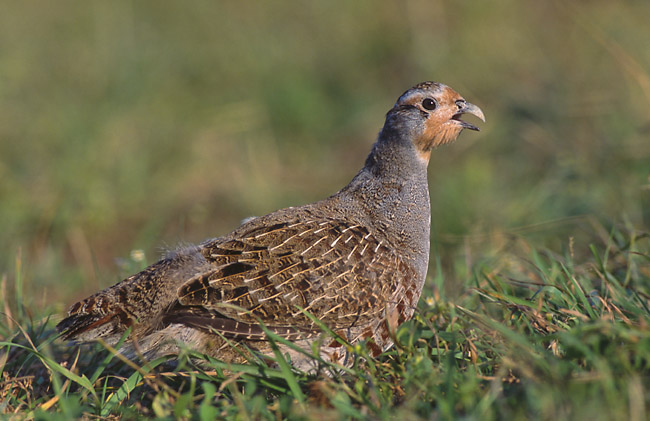Research
Grey partridge behaviour
Game releases for conservation could share problems and possible solutions with wildlife reintroductions, as could be the case with the iconic gamebird of conservation concern, the grey partridge. Our research addressed the common problem of behavioural deficiencies in captive-bred animals and applied it to this widely released but unsuccessfully reintroduced bird. This study showed that released, captive-bred grey partridges used habitats, performed vigilance for predators, and were feeding and roosting in ways that probably made them more vulnerable to predators. The possibility of predicting the survival of individual grey partridges based on their temperament in the bold–shy continuum was tested for, but results on this were not conclusive. Overall, it showed how the scientific framework of wildlife reintroductions can be applied to a gamebird to successfully show weaknesses in their behaviour and to suggest possible improvements in their rearing methods.
Elina Rantanen
David W. Macdonald
Nick Sotherton
Francis Buner
References
Rantanen, E.M., Macdonald, D.W., Sotherton, N.W., Buner, F. 2010. Improving reintroduction success of the grey partridge using behavioural studies. In: Wildlife Conservation on Farmland. Eds: D.W. Macdonald & R.E. Feber. Oxford University Press.
Rantanen, E.M., Buner, F., Riordan, P., Sotherton, N.W., Macdonald, D.W. 2010. Habitat preferences and survival in wildlife reintroductions: an ecological trap in reintroduced grey partridges. Journal of Applied Ecology, 47, 1357-1364.
Rantanen, E.M., Buner, F., Riordan, P., Sotherton, N.W., Macdonald, D.W. 2010. Vigilance behaviour and time budgets in reintroduced captive-bred grey partridges Perdix perdix. Applied Animal Behaviour Science, 127, 43-50.
-
 Grey partridge © Marek Szczepanek
Grey partridge © Marek Szczepanek





